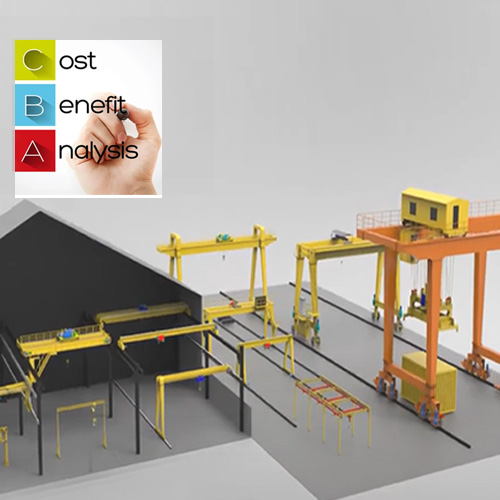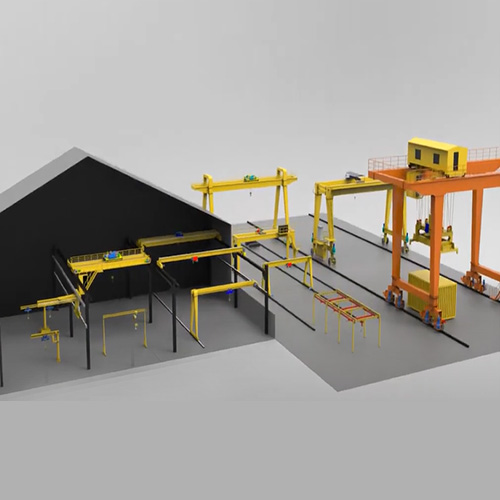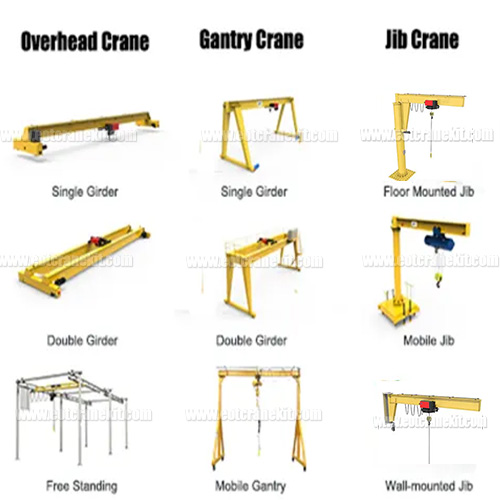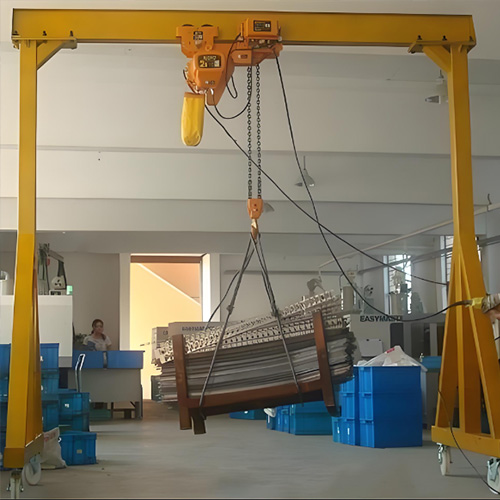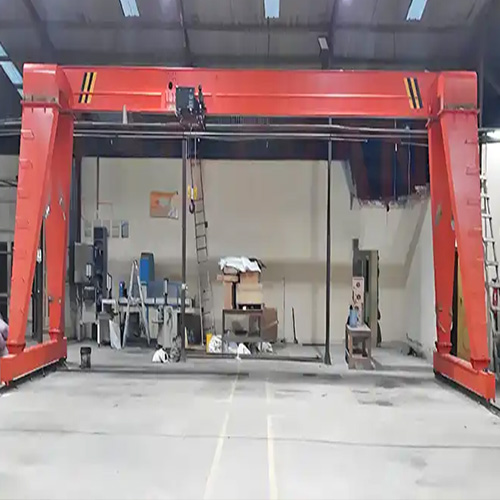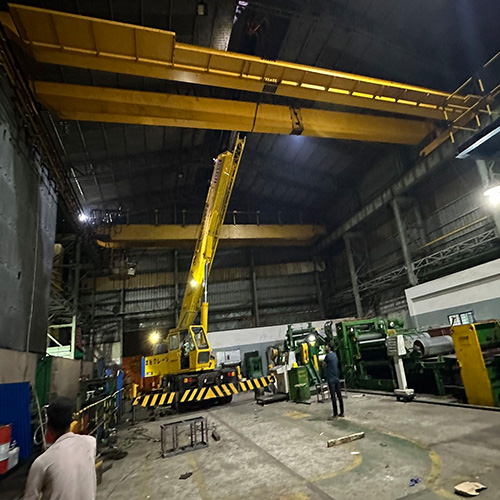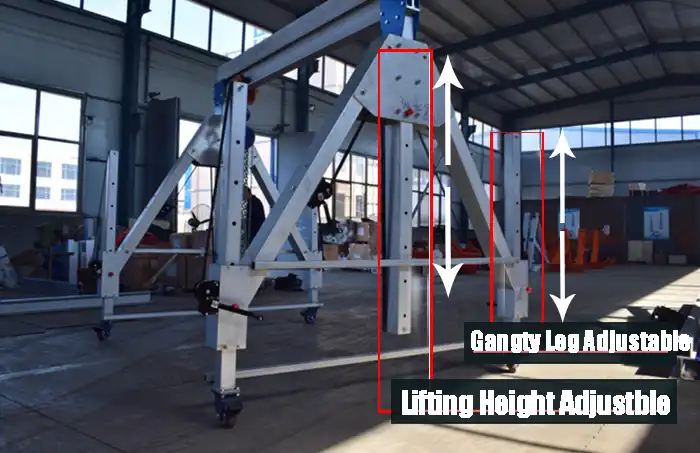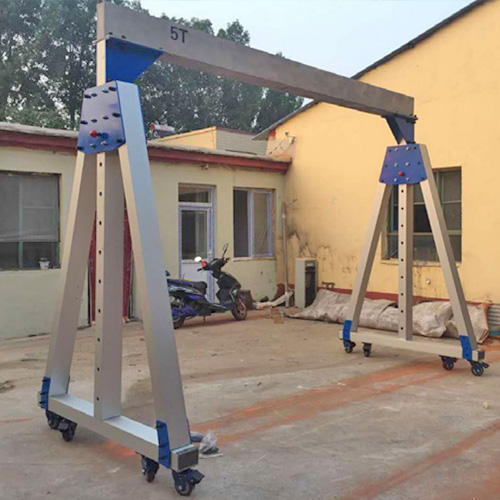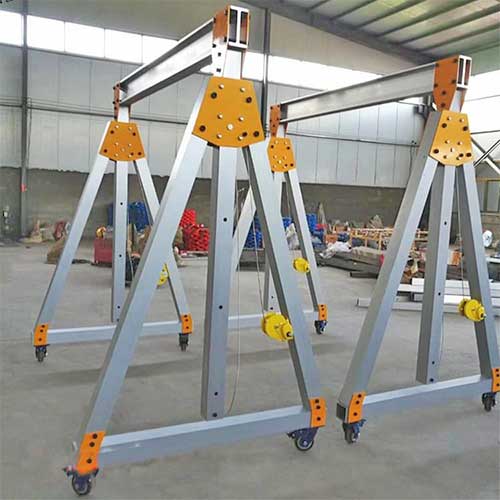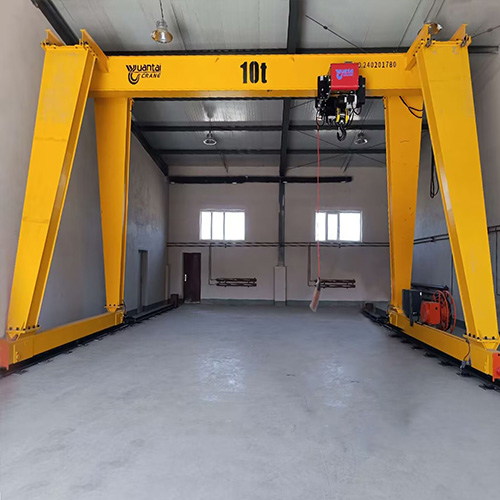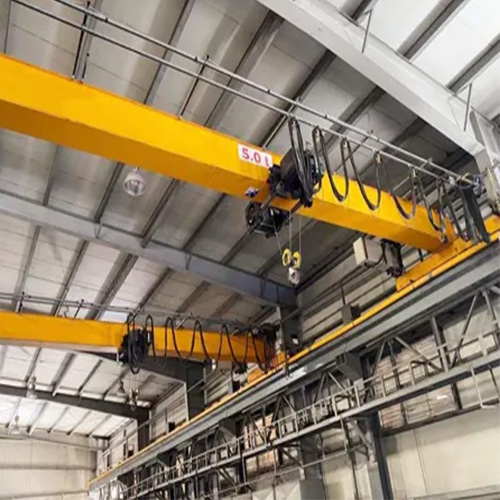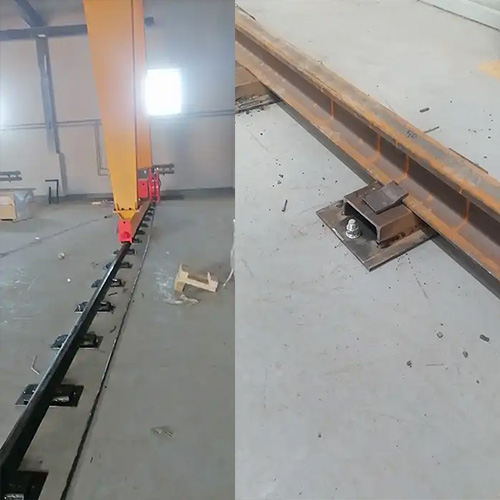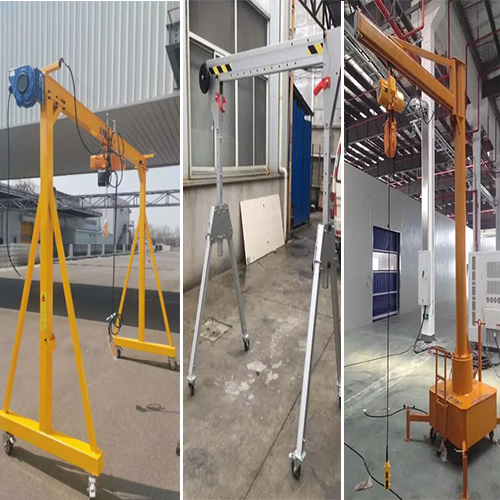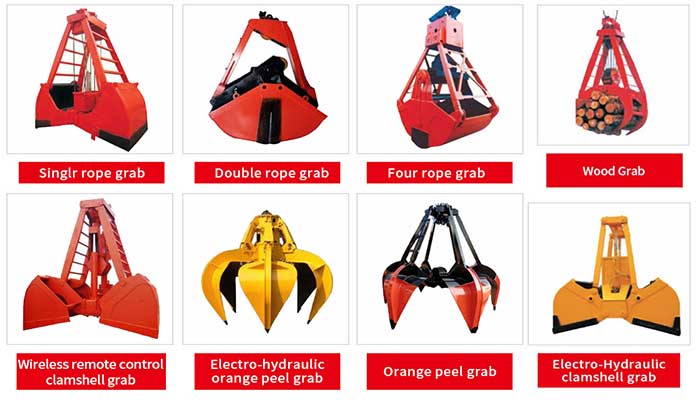
12 Types of Crane Grab Buckets & How to Select for Your Use
12 types of grab buckets overview, types, capacity, features & typical uses. Clamshell grab or orange peel grab, how to select right crane grab? Check now.
Classification standards of grab bucket types
A grab bucket is a special tool used by grab overhead cranes and outdoor grab gantry cranes to grab dry bulk cargo. A grab bucket operation can achieve high loading and unloading efficiency while maintaining safety because it doesn't require intensive manual labor. It is the primary means of handling dry bulk cargo in ports.
- Based on the loads types, the grab bucket can be classified into ore grabs, coal grabs, grain grabs, timber grabs, and so on.
- Based on the structure of grab buckets, it can be classified into clam shell grab bucket and orange peel grab bucket. The former is made up of two complete buckets, while the latter is made up of three or more jaws.
- And based on the driving method of grab bucket, they can be classified into: hydraulic grab and mechanical grab.
Features and uses of each type of grab bucket
1. Double-rope or four rope mechanical orange peel crane grabs:
- Capacity: The standard lifting capacity range is 5.0 ton -40 ton , with material density ranging from 0.5 ton /m3 to 3.0t ton/m3.
- Handling loads: The orange peel grabs are typically used to handle bulk or irregularly shaped bulk materials.
- Feature : The bucket has high strength and wear resistance, as well as good incision when grabbing materials.
- Uses : The 2 /4 rope orange peel crane grab can work with bulk material handling cranes, such as, tower cranes, ship cranes, overhead cranes, and gantry cranes to pick up garbage, stones, scrap steel, and other bulk materials.
2. Double-rope or four rope mechanical clamshell grab bucket:
- Capacity: Its standard lifting capacity range is 5.0t~64t. The material density range is 0.8t/m³~3.0t/m³.
- Handling loads:The clamshell grab bucket is used to handle all kinds of powdery and granular bulk materials.
- Features: The clamshell bucket grab bucket is designed with single spindle, with high grabbing ratio, strong closing force and fast material filling rate.
- Applications: It is typically used in conjunction with types of bulk material handing cranes, such as, tower cranes, ship cranes, and ship unloaders.It is widely used in docks, steel mills, power plants, and ships. Under maritime conditions and other special conditions, the 2/4 rope clamshell bucket can be designed with a dust cover, a maintenance-less or maintenance-free structure of various edge seals and hinge points, and other environmental protection requirements.
3.Double rope and four rope timber grab bucket:
- Capacity; The standard lifting capacity of log grab is 5.0 ton~32 ton.
- Typical uses: The log grabs are typical used to handle logs, timers of various specifications. They can be used to handle a single log or a bundles of logs . It is most commonly associated with tower cranes and gantry cranes. It is primarily used for log yard and dock unloading.
4.Electro-hydraulic clamshell crane bucket:
- Capacity : The electro hydraulic clamshell grab bucket volume is 0.8m³~26.0m³. The corresponding motor power range is 8.5 kw~55 kw.
- Features: The crane grab buckets can be operated in a corrosive environment for a long time, the pins of each hinge point are treated with anti-corrosion effectiveness to ensure the reliability of the pins in a long period of time.
- Loads handling: The eletro hydraulic grab is used to grab powder and granular bulk materials, typically like fertilizer, grain, coal, coke, ore, sand, granular building materials, crushed stone and other bulk materials, etc.
- Uses and applications: The clamshell grabs can be cooperated with various types of bulk material handling cranes such as tower cranes, ship cranes and ship unloaders. They are suitable for bulk loads handling in wharfs, steel mills, power plants, ships and waste incineration plants, etc.
5.Electro-hydraulic orange peel grab bucket:
- Capacity: The standard grab bucket capacity range is 0.8m³ ~ 20m³, and its corresponding motor power range is 8.5 kw ~ 55 kw.
- Handling loads: The orange peel grabs are typically used to handling block, granular and irregular bulk materials, such as, coke, pig iron, scrap steel, slag, garbage and stones, etc.
- Features : The orange peel grab could be directly connected with the crane hook with simple and convenient connection, with the features of high grabbing efficiency and stable working performance.
- Uses and applications:The orange peel grabs are widely used in docks, steel plants and waste incineration plants.
- Capacity: The rectangular grab bucket standard capacity range is 2.0m³~4.0m³ with motor power from 28 kw to 45 kw.
- Handling loads: The hydraulic rectangular grabs are used to handle block, granular and irregular bulk materials such as coke, pig iron, scrap steel and slag, etc.
- Applications:It is ideally suited for bulk cargo loading and unloading from the carriage. It can be used with a variety of bulk material handling cranes, including ship unloaders and tower cranes, and is frequently used in steel mills and docks.
- Capacity: The electro-hydraulic wood grab is 0.4㎡~2.0㎡, and the motor power is 2.2 kw~22kw. It could grab the logs with diameters from Ф700mm to Ф2200mm .
- Applications: The wood grab are typically used for grabbing round logs and log bundles. It is widely used in docks, forest farms, and raw material storage yards for wood processing.
- The standard bucket capacity range is 0.1m³~3.0m³. The lifting capacity is up to 10t.
- To grab powder and granular bulk material.
- It could be configured on hydraulic excavators and boom cranes.
- Capacity: The hydraulic orange peel grab bucket is designed with regular volume of 0.12m³~2.0m³ and lifting capacity is up to 10t.
- Loads handling:The hydraulic orange peel grab is used to grab bulk or irregular bulk materials such as coke, scrap steel, slag and garbage, etc.
- Uses and applications: It could be equipped on hydraulic excavators and boom cranes.
- Capacity: The hydraulic log grabs is with the cross-sectional area of 0.4m2~2.5m2. and with capacity up to 10t.
- Uses and applications: The hydraulic grab buckets are used to grab all kinds of round logs, which can be used in docks, forest farms, wood processing raw material storage yards, etc. It can be mounted on hydraulic excavators and boom cranes.
- Applications; The dredging grab is a specialized material handling grab for underwater dredging with cranes.
- The lifting type of the supporting crane can be classified as four-rope or double-rope mechanical type or hydraulic type.
- It is classified into three types based on the underwater working conditions: clam shell grab bucket for dredging or catching pebbles, heavy-duty grab for digging clay, gravel, and slab soil, and giant salvage grab for removing and grabbing large rocks.
12. Radio Remote Control Grab:
The radio remote control grab is a bulk cargo grab that utilizes a single rope and radio remote control technology. It frequently works in tandem with a single-hook crane to overcome the shortcomings of the single-rope grab's low working efficiency and high operating intensity. It is particularly appropriate for reliable and simple to use single-hook cranes and marine portal cranes. By using a radio remote control, the bucket can be opened and loaded from any position in the air.
If you want to know more about our crane grab bucket for feel free to contact us. Besides, we provide many other types of below hook devices for efficient material handling.
How to select the right type of grab bucket for your use?
Clamshell grab and orange peel grab, how to choose a suitable crane grab ? Simply,
- The power form of the grab bucket needs to be selected according to the type or mold of bulk material handling cranes, and
- the structure design of the grab bucket needs to be selected for the type of loads or object to be loaded and unloaded.
- And the features of grabs needs to be customized based on the application conditions and lifting requirements, etc. In the following, the selection tips are presented for your reference:
Factors affect your grab selections
Before selecting the type of grab, it is necessary to confirm the following information;
- Environment: working environment of the grab crane
- Loads: the objects or loads to be grabbed, including the cubic number of the object to be grabbed at one time, and the specific gravity of the material,etc.
- Equipment: the capacity or tonnages of the grab crane used with the grab. Based on the grab crane equipment's information, decide which type of grab bucket to use. After confirming the type of grab bucket, confirm the opening direction of the grab bucket, which should be perpendicular to the crane's main girder or parallel to the crane's main girder.
1. Preliminary selection according to the purpose of the grab
- The single-rope grab is used on various common cranes, which has only one hoisting drum.They are used to grab various loose materials, and is most suitable for underwater material handing operations.
- The two-rope grab is mainly used with bridge cranes, port machinery, and winches. It is widely used in ports, power plants, wharves, and chemical industries to grab various loose accumulations, such as ore, coal, and slag for truck loading and unloading and other operations,etc.
- The four-rope grab is mainly used in conjunction with the bridge and gantry cranes with two sets of lifting drums to grab various loose materials and perform operations such as loading, unloading, and transfer. According to the materials or loads to be grabbed and the needs of use, it can be designed with teeth, parallel beams for underwater operations, etc.
- The four-rope pyra grab is mainly used for grabbing small-sized loose materials. The dustproof and waterproof performance is good, and the gap between the cutting edge plates is small. It is generally suitable for ports, docks, and cargo stations to grab loose materials such as coal, grain, and slag.
- Electric motor grabs are mostly used for loading and unloading of loose granular materials such as ore, limestone, slag, mineral powder, coal, and coke. The electric grabs can not be used for grab operation in water and rainproof devices needs to be added for outdoor applications. And they are used for general materiel handling environment and are not allowed to be used in flammable, explosive, acid, and alkali vapor environments.
- The stainless steel grab bucket is specially designed for brewing, and is mainly used to grab and transport koji, sauce, sauce residue, etc.
- The multi-jaw grab is suitable for efficient loading and unloading of scrap steel, iron bulk materials and garbage in various harsh environments. It is mainly used in ports, railways, metallurgy, mining, construction and other industries.
- The scissor grab is clean and does not leak when grabbing materials. It is suitable for cleaning stockyards and cabins. When closing, it gradually increases with the closing process, and is mostly used on large bridge ship unloaders.
- The log grab is a special long pole grab used to grab logs. The log grab is suitable for ports, forest farms, lumber yards, wood products factories, paper mills and other industries for loading, unloading, ship unloading, tying, Stacking, etc.
- The electro-hydraulic multi-jaw grab is suitable for harsh environments, irregular and difficult materials. It is mainly used for loading and unloading irregular bulk cargo such as scrap iron, pig iron, stones, etc. It is suitable for steel mills, waste incineration treatment, ports, railway transfers and other occasions.
2. Select the type of grab bucket according to the material to be grabbed
To select the grab based on the material to be grabed, it is necessary to know the heap specific gravity of the materials, in the following , the Loose Material Heap Specific Gravity Table is presented for your reference. As for specific selection, please
Heap Specific Gravity Table of Loose Materials
Material | P ropo rtion(t/m3) | Material | Proporti on(t/m3 ) |
Anthracite | 0 . 7-1 . 0 | Zinc dust | 0 . 7-1 . 5 |
Bituminous coal | 0.8 | Pyrite cinder | 1 . 7-1 .8 |
L ignite | 0 . 6-0 . 8 | Lead and zinc pellets | 1 . 3-1 .8 |
Peat | 0 . 29-0 . 5 | Pyrite pellets | 1 . 2-1 .4 |
Peat (wet) | 0 . 55-0 . 65 | F lat slag (coarse) | 1 . 6-1 .85 |
Coke | 0 . 36-0 . 63 | B last furnace slag | 0 . 6-1 . 0 |
Charcoal | 0 . 2-0 . 4 | Lead and zinc water slag (wet) | 1 . 5-1 . 6 |
A nthracite powder | 0 .84-0 .89 | D ry ash | 0 . 64-0 . 7 2 |
B ituminous coal powder | 0 .4-0 . 7 | Coal ash | 0 . 70 |
Powdered graphite | 0 .45 | Coarse sand (dry) | 1 .4-1 .9 |
Magnetite | 2 . 5-3 . 5 | Coarse sand (wet) | 1 .4-1 . 65 |
Material | Propo rtion(t/m3) | Material | Proporti on(t/m3 ) |
Pyrite (block) | 1 . 5-1 . 9 | Large lime | 1 . 6-2 . 0 |
Manganese | 1 . 7-1 . 9 | Lime blocks | 1 . 2-1 . 5 |
Magnesia (block) | 2 . 2-2 . 5 | Small lime | 1 . 2-1 . 5 |
Powdered magnesia | 2 . 1-2 . 2 | Quicklime | 1 . 7-1 .8 |
Copper | 1 . 7-2 . 1 | Gravel | 1 . 32-2 . 0 |
Copper concentrate | 1 . 3-1 . 8 | Dolomite (block) | 1 . 2-2 . 0 |
Lead concentrate s | 1 .9-2 . 4 | Crushed dolomite | 1 .8-1 .9 |
Z i nc concentrate | 1 . 3-1 . 7 | Gravelly soil | 1 . 5-1 .9 |
Lead and zinc | 1 . 3-2 . 4 | Clay (small pieces) | 0 . 7-1 . 5 |
Iron sinter | 1 . 7-2 . 0 | Clay (wet) | 1 . 7 |
B roken sinter | 1 .4-1 . 6 | Cement | 0 .9-1 . 7 |
List of grabbing buckets for various types of materials and loads
Types of grabs | Loads or objects | Volumes〈t/m3) |
Light | Coke, furnace coal, grains, potatoes, medium anthracite lime, cement, earth, gravel, clay, broken bricks, etc. | 0.5-1.5 |
Medium | Peat, chunks of anthracite, compacted coal, clay, limestone, gravel, table salt, gravel, Bricks, bauxite, flaky iron scale, cement, sand in water, bricks, etc. | >1.2-2 |
Heavy | Limestone, heavy clay, medium and small ore, hard rock, stick-shaped iron oxide scale, iron ore,lead concentrate powder etc. | >2-2.6 |
Super heavy | Large chunks of ore, chunks of manganese ore, deposited agglomerated lead ore powder, etc. | >2.6 |
After the grab is selected, it is also necessary to confirm whether it is suitable for the crane it is equipped with.
Confirmation method:
- firstly confirm the rated lifting capacity of the crane that the grab is equipped with,
- the self-weight of the grab,
- the self-weight of the grab plus the weight of the grabbed material, which cannot exceed the rated lifting capacity of the crane.
Our company specializes in the production and development of various types of grab cranes, such as bridge grab cranes, gantry grab cranes, folding arm grab cranes, hydraulic grab cranes, mechanical grab cranes, etc. Customized grab overhead cranes and gantry cranes and grab buckets can be customized based on your working environment, please feel free to contact us.

